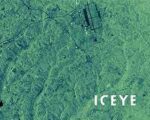Unveiled at DSEI 2025 by BAE Systems and its subsidiary Prismatic Ltd., the PHASA-35 (Persistent High Altitude Solar Aircraft) represents a significant milestone in high-altitude long-endurance (HALE) unmanned aerial systems. Designed to operate in the stratosphere for months at a time using solar-electric propulsion, PHASA-35 blends aerospace engineering with satellite-like capabilities—offering a persistent intelligence, surveillance and reconnaissance (ISR) and communications platform without the cost or latency of orbital assets.
Stratospheric Operations: Bridging Air and Space
PHASA-35 is classified as a High Altitude Pseudo-Satellite (HAPS), operating at altitudes of approximately 18–21 kilometers—above commercial air traffic and weather systems but below low Earth orbit (LEO). This altitude band offers unique advantages:
- Persistent line-of-sight coverage over wide areas
- Reduced signal latency compared to satellites
- Lower launch and maintenance costs than space-based platforms
The aircraft’s ultra-lightweight structure—spanning 35 meters with a mass under 150 kg—is optimized for continuous flight powered by solar energy during daylight hours and lithium-ion batteries during night cycles. The design enables near-continuous operation for months without refueling or recovery.
Design Features and Technical Specifications
Developed by Prismatic Ltd., acquired by BAE Systems in 2019, PHASA-35 is built primarily from carbon-fiber composites to minimize weight while maintaining structural integrity at high altitudes. Key specifications include:
- Wingspan: ~35 meters
- Endurance: Several months (targeting up to one year)
- Altitude envelope: ~65,000–70,000 feet (~20 km)
- Propulsion: Twin electric motors powered by solar panels + batteries
- Cruise speed: ~50–100 km/h depending on mission profile
The modular payload bay allows integration of electro-optical/infrared (EO/IR) sensors, radar systems (e.g., synthetic aperture radar), communications relays (including SATCOM augmentation), or electronic intelligence packages. This flexibility makes PHASA-35 suitable for both military ISR missions and civil applications such as border monitoring or disaster response.
DSEI 2025 Showcase Highlights Operational Maturity
DSEI 2025 marked a key milestone in PHASA-35’s development trajectory. According to BAE Systems representatives at the event, the platform has completed several successful test flights since its maiden flight in February 2020 at NASA’s Armstrong Flight Research Center. These tests validated power management across day-night cycles, autonomous navigation at stratospheric altitudes, and environmental survivability.
The aircraft has also undergone trials with UK Ministry of Defence stakeholders under rapid capability development frameworks. While no formal procurement contract has been announced as of September 2025, officials from Strategic Command have expressed interest in leveraging HAPS platforms like PHASA-35 for persistent overwatch over maritime chokepoints and remote territories—especially where satellite coverage is intermittent or contested.
Pseudo-Satellites vs Satellites vs MALE UAVs
The emergence of HAPS systems like PHASA-35 reflects growing demand for persistent surveillance options that fill capability gaps between traditional drones (e.g., MQ-9 Reaper-class MALE UAVs) and satellites. Each domain offers trade-offs:
| SATELLITES | HAPS / PHASA-35 | MANNED/MALE UAVs | |
|---|---|---|---|
| Endurance | >10 years (orbit life) | >3 months per sortie | >24 hours typical |
| Maneuverability / Tasking Flexibility | Poor once launched into orbit | Moderate – can loiter & reposition slowly | High – responsive tasking possible |
| Spectrum Latency / Relay Quality* | High latency (~500 ms+) | Low latency (~50 ms) | Low latency (~50 ms) |
| Airtime Cost per Hour* | $ millions upfront; low ops cost over time | $ thousands per sortie/months-long mission | $ tens of thousands per day incl crew/support/logistics |
| *Approximate figures; varies with payload/spectrum use case. | |||
This comparison illustrates why militaries are increasingly interested in HAPS platforms—not as replacements but as complementary assets within multi-domain ISR architectures.
Diversifying Use Cases Beyond Defense Applications
The dual-use nature of PHASA-35 opens doors to civil sector applications as well. Potential roles include:
- Agricultural monitoring via multispectral imaging over large farmland regions;
- Nationwide wildfire detection using thermal sensors;
- Aerial telecommunications relay during natural disasters when ground infrastructure is down;
<li
>
>
This versatility aligns with UK government efforts to invest in sovereign space-adjacent capabilities that support both defense resilience and civilian infrastructure continuity.
The Road Ahead: Scaling Toward Operational Deployment?
The next phase for PHASA-35 involves transitioning from demonstrator flights to operational deployments under user-defined mission profiles. Challenges remain—including regulatory frameworks for extended stratospheric operations across national airspace boundaries; robust C2 links over long durations; radiation hardening of electronics; and scaling production capacity beyond prototypes.
If these hurdles are addressed successfully—and if defense customers commit funding toward operationalization—PHASA-35 could become one of Europe’s first fielded stratospheric drone systems capable of strategic persistence without satellites. Its role would be especially critical in grey-zone environments where attribution is blurred but presence must be maintained continuously.









